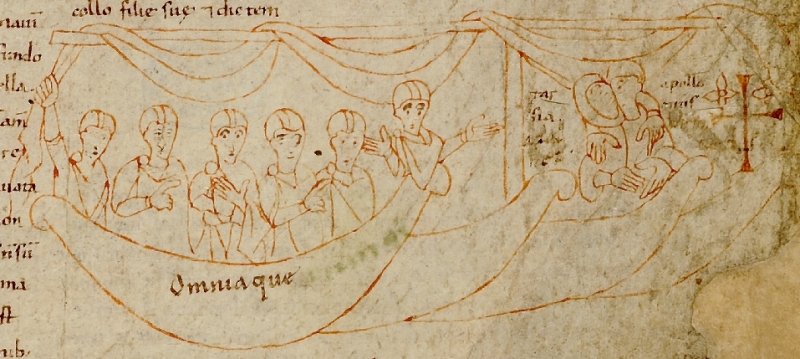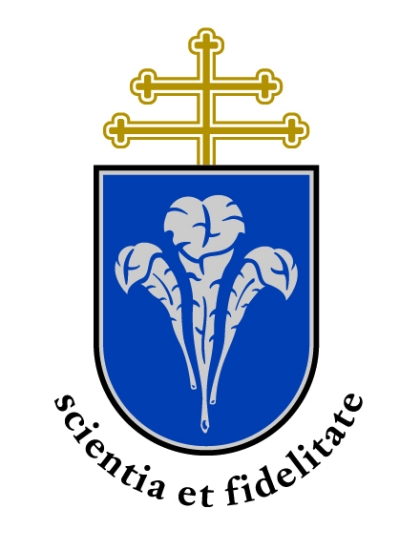 [1]Az Országos Széchényi Könyvtár és a Pázmány Péter Katolikus Egyetem „Hagyományválasztás, hagyományformálás: illusztrált szövegek a késő antikvitástól a romanika felé vezető úton” címmel nemzetközi, interdiszciplináris szimpóziumot rendez.
[1]Az Országos Széchényi Könyvtár és a Pázmány Péter Katolikus Egyetem „Hagyományválasztás, hagyományformálás: illusztrált szövegek a késő antikvitástól a romanika felé vezető úton” címmel nemzetközi, interdiszciplináris szimpóziumot rendez.
A szimpózium ideje: 2014. március 18–20.
Helyszín: Országos Széchényi Könyvtár 6. emeleti előadóterem
A konferencia angol nyelven zajlik.
A szimpózium célja egy olyan fórum létrehozása, amely alkalmat teremt a kultúránkat bizonyos mértékben mai napig meghatározó késő antik illusztrált szövegek befogadásával, átalakításával és továbbhagyományozásával kapcsolatos kérdések megvitatására. Vizsgálódásunknak időben a gótikus könyv megjelenése szab határt, amelyben egy a korábbitól markánsan eltérő ízlésvilág megjelenését, a könyvkészítés és olvasás új korszakát látjuk. Érdeklődésünk középpontjában a hagyományozódás folyamata és mechanizmusa, valamint az egymással párbeszédet folytató szöveges és képi kifejezés lehetőségei állnak. Nem kevésbé foglalkoztat bennünket az illusztrált szövegeknek, illetve az általuk elbeszélt történeteknek a különféle társadalmi csoportok kulturális önmeghatározásában játszott változó szerepe. Amikor folyamatosságról és megújulásról beszélünk, akkor azokra a mindenkori társadalmat mozgató konfliktusokra is gondolunk, amelyek a tudás – legyen szó akár tudományos, akár művészi képességekről és ismeretekről – megőrzése, újragondolása, átformálása és hagyományozódása során keletkeznek.
The National Széchényi Library (Budapest) and the Pázmány Péter Catholic University (Piliscsaba) organizes an international, interdisciplinary symposium under the title “Facing and Forming the Tradition: Illustrated Texts on the Way from Late Antiquity until the Romanesque Times”. The symposium is held in the National Széchényi Library on the 18th – 20th of March, 2014.
The aim of the symposium is to create a forum in order to discuss questions related to the reception, transformation and transmission of Late Antique illustrated texts that (to a certain extent) determine our culture up to the present. We focus on the early period that lasted until the appearance of the Gothic manuscript, which, in our view, marks a new age in the history of producing and reading books. We are as much interested in the mechanism of transmission and in the process of transformation as in the various possibilities of the bilingual expression: the textual and the visual. Furthermore we are not less eagerly interested in the changing social role illustrated texts and the stories they narrate played in the shaping of cultural identities. When we speak about continuity and renewal we have in mind that the process in the course of which we preserve, rethink, reform and bequeath knowledge (be it either scientific/scholarly or literary/artistic) is full of conflicts that, in turn, keep us and our societies going.
Program:
18th of March
17:40 Welcome
18:00 Keynote Lecture by Xavier BARRAL I ALTET Universities of Rennes 2 and Venice Ca'Foscari
The ‘Apollonius Pictus’ Manuscript and Romanesque Art
19th of March
Morning session
Chair: KLANICZAY Gábor Central European University, Budapest
9:20 Herbert KESSLER Johns Hopkins University, Baltimore
Carolingian “Late Antique” Manuscripts and their Place in Modern Scholarship [2]
9:50 BOLLÓK Ádám Institute of Archaeology, Hungarian Academy of Sciences
Rediscovering antiquities and constructing the past in ninth-tenth-century Byzantium [3]
10:20 Peter K. KLEIN Eberhard Karls Universität, Tübingen
The Role of Prototypes and Continuity of Tradition in the Transmission of Medieval Picture Cycles: The Case of the Beatus Manuscripts [4]
10:50–11:35 Discussion
11:35–13:00 Lunch time
Afternoon session
Chair: MAROSI Ernő Institute for Art History, Hungarian Academy of Sciences
13:00 BENCZE Ágnes Pázmány Péter Catholic University, Piliscsaba
The changing contents of a classical literary topos: sacred landscapes from early imperial to early Christian art [5]
13:30 Martin BÜCHSEL Goethe Universität, Frankfurt am Main
Die Autorität des Wortes und die Intellektualität des Einzelnen. Überlegungen zum Autorenporträt des Hrabanus Maurus. In honorem sanctae crucis [6]
14:00 Vinni LUCHERINI Università degli Studi di Napoli Federico II
The role of late antique and high medieval narrativity in the construction of the Hungarian Illuminated Chronicle [7]
14:30–15:15 Discussion
20th of March
Morning session
Chair: Herbert KESSLER Johns Hopkins University, Baltimore
9:20 Giulia OROFINO Università di Cassino e del Lazio meridionale
La storia nei margini. I disegni dell’Orosio Vat. lat. 3340 tra eredità tardoantica e creazione medievale. History in the Margins. Orosius Illustrated, Vat. lat. 3340, between Late Antique Legacy and Medieval Creativity. [8]
9:50 ΝÉMETH András Biblioteca Apostolica Vaticana
Fragmenting and merging actions in the Budapest Apollonius pictus [9]
10:20 BORECZKY Anna National Széchényi Library – Hungarian Academy of Sciences
From illustrations in papyrus style to the whole page miniature. ‘Evolution‘ or a variety of narrative strategies? [10]
10:50–11:35 Discussion
11:35–13:00 Lunch time
Afternoon session
Chair: JÉKELY Zsombor Museum of Applied Arts, Budapest
13:00 SOMFAI Anna Central European University, Budapest
Visual thinking and diagrammatic reasoning in the transmission of knowledge in medieval philosophical, scientific and encyclopedic manuscripts [11]
13:30 Milagros GUARDIA Universitat de Barcelona
Iratusque est Cain vehementer...Cain being wroth, a gap in the iconographic transmission of the Pyrenees [12]
14:00 SZAKÁCS Béla Zsolt Pázmány Péter Catholic University, Piliscsaba
Archaism, imitation, provincialism? Notes on the murals of Kosztolány / Kostoľany pod Tribečom [13]
14:30–15:15 Discussion
Támogatók: Nemzeti Kulturális Alap, Pázmány Péter Katolikus Egyetem, Országos Széchényi Könyvtár
Invitation [14]

